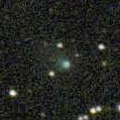
|
Now it is bright as 11.8 mag (July 4, Thomas Lehmann). It is expected to brighten up to 8 mag in autumn. In the Northern Hemisphere, it stays observable for a long time while the comet is brightening. In the Southern Hemisphere, it it not observable until mid September.
Date(TT) R.A. (2000) Decl. Delta r Elong. m1 Best Time(A, h)
July 13 4 30.48 60 5.9 2.124 1.647 49 11.7 5:37 (204,-15)
July 20 4 30.57 59 39.3 1.996 1.604 52 11.4 5:34 (202,-12)
|

|
Now it is very bright as 10.5 mag (June 29, Carlos Labordena). It will be fading after this. It is not observable in the Southern Hemisphere. It will be unobservable soon also in the Northern Hemisphere.
Date(TT) R.A. (2000) Decl. Delta r Elong. m1 Best Time(A, h)
July 13 8 35.46 38 27.8 2.287 1.398 22 11.7 18:34 (127,-14)
July 20 8 53.38 34 26.9 2.366 1.441 18 12.1 18:38 (122,-14)
|
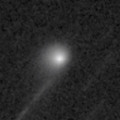
|
Now it is 13.2 mag (June 30, Thomas Lehmann). It will brighten up to 10.5 mag and it will be observable in good condition from autumn to winter.
Date(TT) R.A. (2000) Decl. Delta r Elong. m1 Best Time(A, h)
July 13 2 39.21 10 53.0 3.557 3.337 69 12.0 5:37 (212, 38)
July 20 2 41.35 12 27.4 3.429 3.314 74 11.9 5:34 (205, 39)
|

|
It is expected to brighten up to 7 mag in 2020. Appearing in the morning sky.
Date(TT) R.A. (2000) Decl. Delta r Elong. m1 Best Time(A, h)
July 13 4 37.23 16 60.0 4.636 3.915 40 13.4 5:37 (235, 16)
July 20 4 43.59 17 44.1 4.497 3.849 45 13.2 5:34 (231, 19)
|

|
Now it is not observable. It will appear in the morning sky again at 13-14 mag in August.
Date(TT) R.A. (2000) Decl. Delta r Elong. m1 Best Time(A, h)
July 13 6 7.06 19 57.5 3.113 2.175 18 13.2 5:37 (247, -2)
July 20 6 22.78 19 42.6 3.108 2.196 21 13.3 5:34 (245, 0)
|

|
It has not been observed yet in this apparition. Now it is fainter than 18.5 mag (June 9, Martin Masek). It is expected to brighten up to 12 mag from August to September. It is observable in good condition in the Northern Hemisphere. It will be low around the high light in the Southern Hemisphere.
Date(TT) R.A. (2000) Decl. Delta r Elong. m1 Best Time(A, h)
July 13 2 20.82 12 43.3 1.285 1.385 72 13.9 5:37 (206, 38)
July 20 2 40.79 16 35.7 1.247 1.372 73 13.4 5:34 (203, 35)
|

|
Now it is bright as 12.8 mag (July 4, Steffen Fritsche).
Date(TT) R.A. (2000) Decl. Delta r Elong. m1 Best Time(A, h)
July 13 0 58.76 14 56.3 5.666 5.770 90 13.5 5:37 (180, 40)
July 20 1 0.07 15 17.5 5.558 5.770 96 13.4 5:11 (180, 40)
|
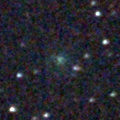
|
Now it is very bright as 11.8 mag (June 23, Michael Mattiazzo). It brightened very rapidly when it was not observable near by Sun. In the Southern Hemisphere, it stays observable in the evening sky for a long time after this while the comet will be fading. It is not observable at all in the Northern Hemisphere.
Date(TT) R.A. (2000) Decl. Delta r Elong. m1 Best Time(A, h)
July 13 8 59.95 -39 54.7 1.746 1.616 65 13.5 18:34 ( 61, 33)
July 20 9 38.74 -40 5.6 1.811 1.669 65 14.0 18:38 ( 62, 34)
|
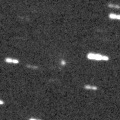
|
Now it is bright as 13.2 mag (June 30, Thomas Lehmann). It stays 13 mag for a long time in 2019. In the Southern Hemisphere, it is observable in excellent condition. In the Northern Hemisphere, it is not observasble until summer in 2020.
Date(TT) R.A. (2000) Decl. Delta r Elong. m1 Best Time(A, h)
July 13 7 56.65 -54 51.0 3.078 3.018 77 13.8 18:34 ( 41, 28)
July 20 8 3.74 -56 1.9 3.082 3.018 76 13.8 18:38 ( 38, 25)
|

|
It brightened up to 7.7 mag in June in 2018 (June 19, Juan Jose Gonzalez). Now it is fading. But it is still bright as 13.4 mag (May 30, Chris Wyatt). In the Southern Hemisphere, it stays observable for a long time until the comet will fade out. In the Northern Hemisphere, it is not observable for a long time until autumn when the comet fades out down to 16 mag.
Date(TT) R.A. (2000) Decl. Delta r Elong. m1 Best Time(A, h)
July 13 6 26.93 -28 52.9 4.764 4.228 52 13.9 5:37 (291, 22)
July 20 6 32.71 -28 40.1 4.814 4.285 53 13.9 5:34 (288, 26)
|

|
Now it is 14.4 mag (June 30, Kevin Hills). It will brighten rapidly up to 11.5 mag in autumn. In the Northern Hemisphere, it will be observable in excellent condition. In the Southern Hemisphere, it will be extremely low from autumn to winter.
Date(TT) R.A. (2000) Decl. Delta r Elong. m1 Best Time(A, h)
July 13 0 40.76 -5 31.2 0.982 1.561 102 14.3 5:19 (180, 60)
July 20 0 55.73 -2 29.5 0.915 1.531 104 13.9 5:07 (180, 57)
|

|
Now it is 13.1 mag (June 28, Thomas Lehmann). It stays 13-14 mag until summer. It is observable in excellent condition in the Southern Hemisphere. In the Northern Hemisphere, it will be unobservable soon.
Date(TT) R.A. (2000) Decl. Delta r Elong. m1 Best Time(A, h)
July 13 13 49.85 -42 38.8 3.196 3.652 108 14.1 18:34 ( 10, 82)
July 20 13 43.73 -42 30.5 3.336 3.682 101 14.3 18:38 ( 46, 78)
|
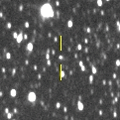
|
Now it is 14.5 mag (July 3, Thomas Lehmann). It will be observable at 13.5 mag in good condition in autumn.
Date(TT) R.A. (2000) Decl. Delta r Elong. m1 Best Time(A, h)
July 13 17 17.40 -3 46.9 1.246 2.151 143 14.5 21:53 (180, 59)
July 20 17 14.73 -4 16.5 1.250 2.115 137 14.3 21:23 (180, 59)
|

|
Now it is 14.4 mag (June 10, Martin Masek). In the Southern Hemisphere, it is observable for a long time. It stays low in the Northern Hemisphere.
Date(TT) R.A. (2000) Decl. Delta r Elong. m1 Best Time(A, h)
July 13 0 28.62 -45 20.8 3.620 4.160 115 14.7 5:07 ( 0, 80)
July 20 0 26.10 -45 33.5 3.577 4.180 120 14.7 4:37 ( 0, 80)
|

|
It brightens up to 15 mag from July to September. In the Southern Hemisphere, it stays observable in the low sky until it becomes fainter than 18 mag in autumn. It is not observable at all in the Northern Hemisphere.
Date(TT) R.A. (2000) Decl. Delta r Elong. m1 Best Time(A, h)
July 13 7 1.27 -5 2.3 2.260 1.439 27 15.1 5:37 (275, 2)
July 20 7 14.67 -8 52.1 2.197 1.429 31 15.0 5:34 (276, 7)
|
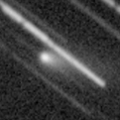
|
Now it is 15.5 mag (July 4, Thomas Lehmann). It stays at 15 mag for a while. It is observable in excellent condition in the Northern Hemisphere. It locates extremely low in the Southern Hemisphere.
Date(TT) R.A. (2000) Decl. Delta r Elong. m1 Best Time(A, h)
July 13 0 33.73 43 52.0 1.579 1.786 83 15.3 5:12 (180, 11)
July 20 0 44.85 44 58.3 1.576 1.831 87 15.4 4:56 (180, 10)
|

|
It approached to Earth down to 0.3 a.u. in mid February, and brightened up to 5.5 mag (Feb. 13, Juan Jose Gonzalez). Now it is fading. Appearing in the morning sky.
Date(TT) R.A. (2000) Decl. Delta r Elong. m1 Best Time(A, h)
July 13 4 45.73 37 33.4 3.242 2.519 37 15.6 5:37 (222, 0)
July 20 4 45.47 38 7.3 3.223 2.593 44 15.7 5:34 (218, 3)
|
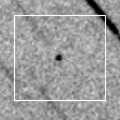
|
It passed the perihelion on July 2. Then it must have brightened up to 13 mag, but it was not observable around that time. In the Northern Hemisphere, it will appear in the morning sky at 16 mag in late July. In the Southern Hemisphere, it will be too low to observe.
Date(TT) R.A. (2000) Decl. Delta r Elong. m1 Best Time(A, h)
July 13 6 4.22 33 18.5 0.827 0.391 21 15.9 5:37 (236, -9)
July 20 5 37.81 37 28.4 0.885 0.570 34 15.8 5:34 (226, -4)
|
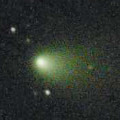
|
It brightened up to 12-13 mag from winter to spring. Now it is fading. It has already faded down to 15.1 mag (June 5, Thomas Lehmann). It will be getting lower after this. It will be unobservable in August in the Northern Hemisphere, or in September in the Southern Hemisphere.
Date(TT) R.A. (2000) Decl. Delta r Elong. m1 Best Time(A, h)
July 13 12 14.83 4 21.7 2.569 2.448 71 15.9 18:34 (143, 44)
July 20 12 24.21 2 40.7 2.671 2.473 67 16.1 18:38 (136, 43)
|
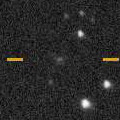
|
Now it is 16.6 mag (May 10, Mount John Observatory, Lake Tekapo). It stays 16 mag for a long time from 2019 to 2020. It is observable in excellent condition in the Southern Hemisphere. It is hardly observable in the Northern Hemisphere.
Date(TT) R.A. (2000) Decl. Delta r Elong. m1 Best Time(A, h)
July 13 10 52.91 -53 17.0 3.592 3.688 87 15.9 18:34 ( 46, 53)
July 20 10 54.11 -53 14.9 3.638 3.665 83 15.9 18:38 ( 47, 49)
|
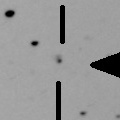
|
Asteroid, but it brightened rapidly. Now it is 16.3 mag (May 24, ATLAS-MLO, Mauna Loa). It is observable in excellent condition in the Southern Hemisphere. In the Northern Hemisphere, it locates extremely low for a while.
Date(TT) R.A. (2000) Decl. Delta r Elong. m1 Best Time(A, h)
July 13 21 40.35 -41 51.2 5.565 6.430 145 16.0 2:20 ( 0, 83)
July 20 21 31.16 -42 19.7 5.523 6.428 150 16.0 1:44 ( 0, 83)
|

|
Now it is 16.0 mag (June 27, Steward Observatory, Mt. Lemmon Station). It stays observable in good condition while the comet will be fading slowly after this.
Date(TT) R.A. (2000) Decl. Delta r Elong. m1 Best Time(A, h)
July 13 1 56.32 10 34.2 1.979 2.051 79 16.1 5:37 (200, 42)
July 20 2 10.24 10 47.4 1.928 2.062 82 16.1 5:34 (196, 43)
|
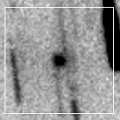
|
Now it is 16.3 mag (May 23, Ken-ichi Kadota). It will brighten up to 16 mag from June to August, and it will be observable in excellent condition in the Northern Hemisphere. It is not observable in the Southern Hemisphere.
Date(TT) R.A. (2000) Decl. Delta r Elong. m1 Best Time(A, h)
July 13 14 29.05 78 26.2 1.755 1.728 71 16.1 19:02 (180,-23)
July 20 14 1.50 70 35.3 1.765 1.726 70 16.1 18:38 (177,-15)
|

|
Now it is 14.2 mag (May 7, Thomas Lehmann). It will be fading after this. In the Southern Hemisphere, it stays observable for a long time until it fades out. In the Northern Hemisphere, it will not be observable after this.
Date(TT) R.A. (2000) Decl. Delta r Elong. m1 Best Time(A, h)
July 13 6 22.26 -24 58.3 5.055 4.461 49 16.1 5:37 (286, 21)
July 20 6 26.21 -26 0.7 5.074 4.513 51 16.2 5:34 (285, 26)
|

|
It has not been observed yet in this apparition. It will be observable at 16 mag in good condition from summer to autumn. It locates somewhat low in the Southern Hemisphere.
Date(TT) R.A. (2000) Decl. Delta r Elong. m1 Best Time(A, h)
July 13 2 10.96 19 20.3 2.069 2.023 73 16.3 5:37 (201, 33)
July 20 2 23.71 20 39.1 2.009 2.028 76 16.2 5:34 (197, 32)
|

|
Now it is 16.1 mag (June 5, Toshihiko Ikemura, Hirohisa Sato). It will be fading slowly after this. It is observable in good condition in the Northern Hemisphere. In the Southern Hemisphere, it stays extremely low for a while.
Date(TT) R.A. (2000) Decl. Delta r Elong. m1 Best Time(A, h)
July 13 14 40.49 36 21.4 4.845 4.965 90 16.3 19:17 (180, 19)
July 20 14 40.74 34 51.3 4.966 5.018 87 16.4 18:50 (180, 20)
|

|
Now it is 16.6 mag (July 1, D. T. Durig). It stays 15-16 mag for a long time until 2021.
Date(TT) R.A. (2000) Decl. Delta r Elong. m1 Best Time(A, h)
July 13 21 50.23 -35 7.5 4.368 5.242 146 16.4 2:30 ( 0, 90)
July 20 21 41.54 -35 6.7 4.290 5.214 152 16.3 1:54 ( 0, 90)
|

|
Now it is 16.1 mag (June 5, Toshihiko Ikemura, Hirohisa Sato). It will brighten up to 14 mag in winter. It stays observable for a long time in the Southern Hemisphere. It is observable only until early August in the Northern Hemisphere.
Date(TT) R.A. (2000) Decl. Delta r Elong. m1 Best Time(A, h)
July 13 15 34.37 -33 40.9 2.467 3.194 127 16.5 20:10 (180, 89)
July 20 15 23.90 -34 24.7 2.509 3.136 119 16.5 19:32 (180, 90)
|
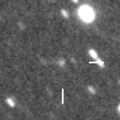
|
Now it is 17.2 mag (May 26, iTelescope Observatory, Siding Spring). It will be fading slowly after this. It is observable in excellent condition in the Southern Hemisphere. It locates low in the Northern Hemisphere.
Date(TT) R.A. (2000) Decl. Delta r Elong. m1 Best Time(A, h)
July 13 15 22.95 -40 58.0 2.978 3.667 125 16.5 19:59 ( 0, 84)
July 20 15 9.30 -40 30.1 3.081 3.658 117 16.6 19:18 ( 0, 84)
|

|
Now it is 16.7 mag (June 27, Thomas Lehmann). It is expected to be observable at 5-6 mag for a long time from 2022 to 2023. In the Northern Hemisphere, it is not observable at the highlight from 2022 summer to 2023 summer. In the Southern Hemisphere, it stays unobservable for a while. But it will be observable in good condition at the highlight.
Date(TT) R.A. (2000) Decl. Delta r Elong. m1 Best Time(A, h)
July 13 17 25.09 57 52.8 11.132 11.288 96 16.8 22:00 (180, -3)
July 20 17 21.23 57 28.8 11.100 11.241 95 16.7 21:29 (180, -2)
|
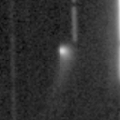
|
Now it is 16.7 mag (May 2, Kunihiro Shima). It will be fading after this. In the Northern Hemisphere, it stays observable in good condition for a long time. In the Southern Hemisphere, it stays extremely low for a long time.
Date(TT) R.A. (2000) Decl. Delta r Elong. m1 Best Time(A, h)
July 13 4 23.71 48 37.7 4.339 3.690 44 16.9 5:37 (211, -5)
July 20 4 24.16 48 44.8 4.288 3.720 50 16.9 5:34 (208, -3)
|

|
It has not been observed yet in this apparition. It will brighten up to 15.5 mag and it will be observable in good condition in autumn.
Date(TT) R.A. (2000) Decl. Delta r Elong. m1 Best Time(A, h)
July 13 23 55.22 -5 3.7 2.255 2.814 113 17.2 4:34 (180, 60)
July 20 23 59.18 -4 57.9 2.147 2.784 118 17.0 4:10 (180, 60)
|
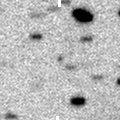
|
Now it is 16.9 mag (May 29, Toshihiko Ikemura, Hirohisa Sato). It brightens up to 17 mag in July. It is observable in good condition in the Southern Hemisphere. It locates low in the Northern Hemisphere.
Date(TT) R.A. (2000) Decl. Delta r Elong. m1 Best Time(A, h)
July 13 12 7.08 -7 19.9 0.670 1.058 74 17.2 18:34 (131, 53)
July 20 12 36.69 -15 17.8 0.686 1.101 77 17.3 18:38 (121, 59)
|

|
Now it is 18.0 mag (June 29, Michael Jager). It will brighten up to 17 mag from June to July, and will be observable in good condition.
Date(TT) R.A. (2000) Decl. Delta r Elong. m1 Best Time(A, h)
July 13 16 30.58 -11 16.6 1.539 2.382 136 17.2 21:05 (180, 66)
July 20 16 10.04 -8 13.5 1.650 2.376 124 17.3 20:18 (180, 63)
|

|
Now it is 17.7 mag (June 24, D. T. Durig). It will be observable at 17 mag in good condition from August to September.
Date(TT) R.A. (2000) Decl. Delta r Elong. m1 Best Time(A, h)
July 13 1 35.33 39 46.9 2.325 2.277 74 17.4 5:37 (187, 15)
July 20 1 34.11 38 27.5 2.214 2.289 81 17.3 5:34 (182, 16)
|

|
Now it is 16.4 mag (May 26, Toshihiko Ikemura, Hirohisa Sato). It is observable at 17 mag in good condition in 2019. It locates somewhat low in the Northern Hemisphere.
Date(TT) R.A. (2000) Decl. Delta r Elong. m1 Best Time(A, h)
July 13 15 10.61 -15 42.9 3.345 3.945 119 17.4 19:47 (180, 71)
July 20 15 11.07 -15 55.2 3.445 3.954 112 17.4 19:20 (180, 71)
|

|
First return of a new periodic comet which brightened up to 16.5 mag in 2009. It has not been recovered yet in this apparition. It will brighten up to 16 mag in autumn. It is observable in good condition in the Northern Hemisphere. It locates low in the Southern Hemisphere.
Date(TT) R.A. (2000) Decl. Delta r Elong. m1 Best Time(A, h)
July 13 3 3.81 24 40.1 1.702 1.481 59 17.7 5:37 (211, 23)
July 20 3 30.69 26 3.8 1.640 1.438 60 17.4 5:34 (211, 22)
|

|
It has not been observed yet in this apparition. It was expected to be observable at 17.5 mag from June to August. But actually, it was fainter than 21.5 mag in March (Mar. 10, Erwin Schwab).
Date(TT) R.A. (2000) Decl. Delta r Elong. m1 Best Time(A, h)
July 13 18 39.52 -13 53.1 1.106 2.107 166 17.5 23:15 (180, 69)
July 20 18 35.71 -15 9.3 1.116 2.100 160 17.5 22:44 (180, 70)
|

|
Now it is 17.3 mag (May 26, iTelescope Observatory, Siding Spring). In the Southern Hemisphere, it is observable at 17.5 mag in good condition from spring to summer. In the Northern Hemisphere, it is not observable at all.
Date(TT) R.A. (2000) Decl. Delta r Elong. m1 Best Time(A, h)
July 13 16 15.70 -54 1.3 3.649 4.394 131 17.7 20:52 ( 0, 71)
July 20 16 13.81 -53 11.7 3.707 4.395 127 17.8 20:23 ( 0, 72)
|

|
In the Southern Hemisphere, it is observable at 18 mag in good condition from July to August. It locates low in the Northern Hemisphere.
Date(TT) R.A. (2000) Decl. Delta r Elong. m1 Best Time(A, h)
July 13 20 29.86 -32 15.8 2.653 3.636 162 17.9 1:10 (180, 87)
July 20 20 25.17 -32 42.8 2.637 3.633 166 17.9 0:38 (180, 88)
|

|
Now it is 17.4 mag (May 7, Toshihiko Ikemura, Hirohisa Sato). It will brighten up to 17.5 mag from June to July.
Date(TT) R.A. (2000) Decl. Delta r Elong. m1 Best Time(A, h)
July 13 20 20.34 -32 40.1 1.689 2.681 164 17.9 1:00 (180, 88)
July 20 20 17.40 -34 8.0 1.713 2.709 165 18.0 0:30 (180, 89)
|
|
![]()
 29P/Schwassmann-Wachmann 1
29P/Schwassmann-Wachmann 1 C/2018 W1 ( Catalina )
C/2018 W1 ( Catalina ) C/2018 A6 ( Gibbs )
C/2018 A6 ( Gibbs ) C/2016 M1 ( PanSTARRS )
C/2016 M1 ( PanSTARRS ) 260P/McNaught
260P/McNaught C/2017 M4 ( ATLAS )
C/2017 M4 ( ATLAS ) 68P/Klemola
68P/Klemola C/2017 B3 ( LINEAR )
C/2017 B3 ( LINEAR ) C/2019 A9 ( PanSTARRS )
C/2019 A9 ( PanSTARRS ) C/2019 D1 ( Flewelling )
C/2019 D1 ( Flewelling ) C/2018 Y1 ( Iwamoto )
C/2018 Y1 ( Iwamoto ) (3200) Phaethon
(3200) Phaethon 123P/West-Hartley
123P/West-Hartley C/2018 F4 ( PanSTARRS )
C/2018 F4 ( PanSTARRS ) A/2017 U7
A/2017 U7 C/2019 K5 ( Young )
C/2019 K5 ( Young ) C/2019 J2 ( Palomar )
C/2019 J2 ( Palomar ) C/2016 N6 ( PanSTARRS )
C/2016 N6 ( PanSTARRS ) 261P/Larson
261P/Larson C/2016 R2 ( PanSTARRS )
C/2016 R2 ( PanSTARRS ) C/2019 K7 ( Smith )
C/2019 K7 ( Smith ) C/2019 K1 ( ATLAS )
C/2019 K1 ( ATLAS ) C/2018 KJ3 ( Lemmon )
C/2018 KJ3 ( Lemmon ) C/2017 K2 ( PanSTARRS )
C/2017 K2 ( PanSTARRS ) C/2018 A3 ( ATLAS )
C/2018 A3 ( ATLAS ) 101P/Chernykh
101P/Chernykh 209P/LINEAR
209P/LINEAR C/2019 J3 ( ATLAS )
C/2019 J3 ( ATLAS ) C/2019 K4 ( Ye )
C/2019 K4 ( Ye ) 74P/Smirnova-Chernykh
74P/Smirnova-Chernykh P/2008 Y1 ( Boattini )
P/2008 Y1 ( Boattini ) P/2012 K3 ( Gibbs )
P/2012 K3 ( Gibbs ) 186P/Garradd
186P/Garradd 215P/NEAT
215P/NEAT C/2019 J1 ( Lemmon )
C/2019 J1 ( Lemmon )![]()



























